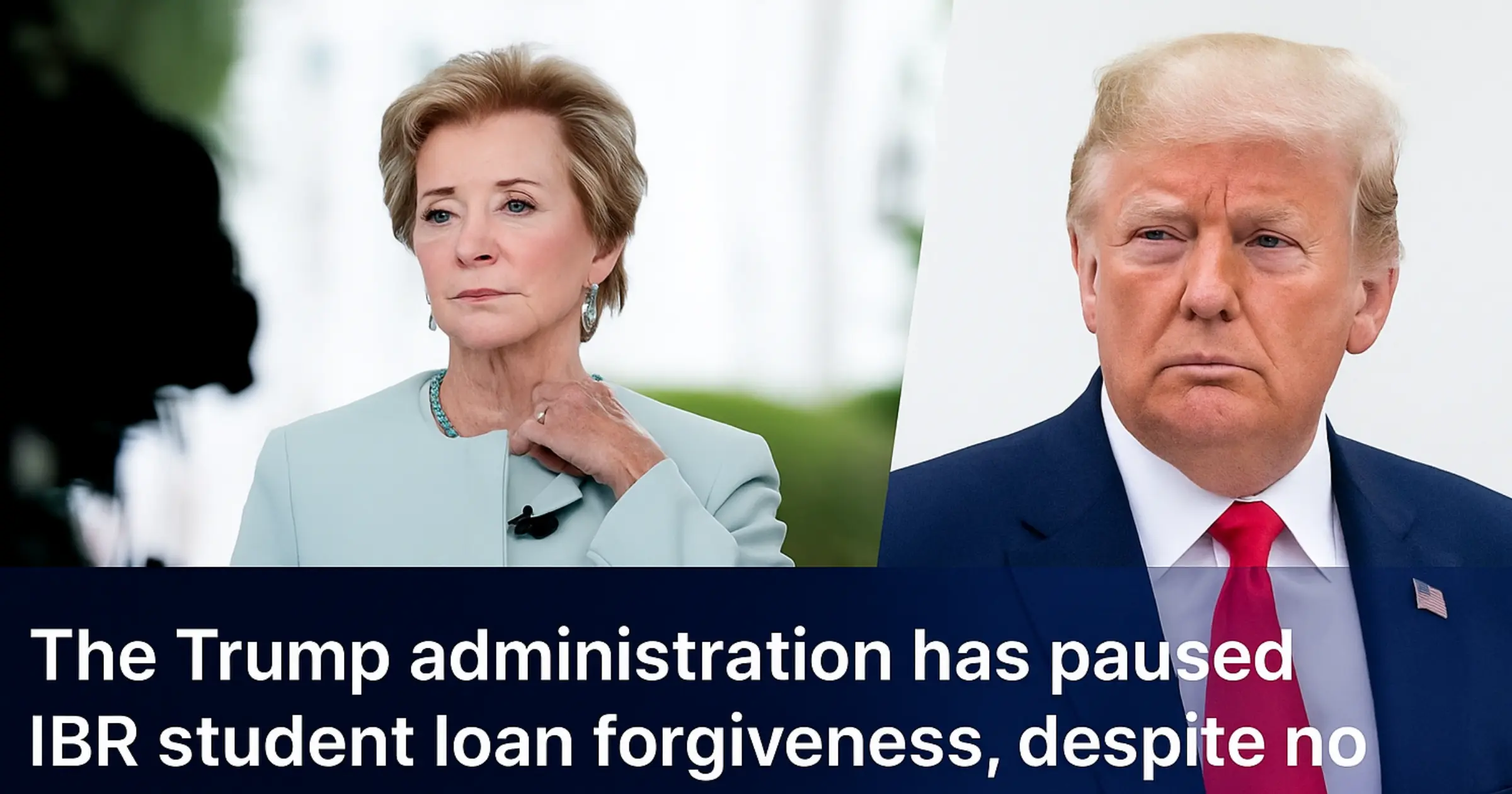IBR student loan forgiveness: While the Income-Based Repayment (IBR) plan remains the only student loan program not blocked by legal challenges, the Department of Education has quietly paused loan forgiveness — leaving eligible borrowers in limbo.
Table of Contents
The Trump administration has suspended student loan forgiveness under the Income-Based Repayment (IBR) plan, even though IBR is the only major income-driven repayment program not currently blocked by court injunctions. The Department of Education says the pause is due to “system updates,” but critics argue the move is legally questionable and unfair to borrowers who have already met forgiveness criteria.
Background: What is IBR?
The Income-Based Repayment (IBR) plan, established by Congress, is a federal student loan repayment program that caps monthly payments based on a borrower’s income and family size — typically 10–15% of discretionary income. Forgiveness is granted after 20 or 25 years of qualifying payments, depending on when the loan was first disbursed.
Unlike the SAVE, PAYE, and ICR plans — all of which are currently under legal fire — IBR’s statutory forgiveness is explicitly authorized by law. Recent federal court rulings have blocked forgiveness under these newer plans, but not under IBR
The Pause and Its Justification
In updated guidance issued this month, the Department of Education confirmed the pause:
“Currently, IBR forgiveness is paused while our systems are updated,” the agency stated, adding that forgiveness will resume once those updates are complete.
However, the department has not explained why forgiveness must stop during these updates, especially given no court order mandates such a suspension for IBR. This lack of transparency has raised red flags.
According to internal whistleblower reports, the process has been paused since July 2024, despite the legal requirement to cancel debt once borrowers meet the 20- or 25-year threshold.
Public Reaction: Confusion and Frustration
Borrowers and financial planners have taken to social media to voice outrage.
“If you’re a teacher and you have a $1,400 loan payment… Did the government make you get those loans? Have you applied for any of these programs?” one user questioned on X (formerly Twitter), pointing to the growing confusion about eligibility and relief.
Another advisor wrote:
“All IDR plans will eventually consolidate into IBR and RAP… but forgiveness timelines are now extended: IBR is 25 years, RAP is 30.”
Other borrowers expressed anger at the administration’s guidance encouraging borrowers to switch from blocked SAVE plans into IBR, only to find forgiveness blocked there too.
Political and Legal Underpinnings
The IBR pause appears loosely tied to the broader legal fight over SAVE — a Biden-era plan currently blocked by federal injunctions. The Trump Department of Education claims it must update systems to reflect “months not affected by the court’s injunction.”
But legal experts argue the SAVE ruling does not apply to IBR. The Department’s reliance on SAVE-related injunctions to halt a Congressionally-authorized forgiveness program may constitute a violation of federal law, according to a former Department of Education official.
“Borrowers who are eligible for IBR cancellation were still not having their loans cancelled — a process paused since July 2024 — despite the statutory obligation to do so,” the official stated.
What Comes Next: RAP and the Future of Loan Forgiveness
Earlier this month, President Trump signed the “Big, Beautiful Bill”, a sweeping student loan reform law that phases out SAVE, PAYE, and ICR, and introduces a new plan: the Repayment Assistance Plan (RAP). While IBR remains in place for current borrowers, RAP will be the default for new ones — and offers forgiveness only after 30 years.
Meanwhile, over 1.5 million IDR applications remain stuck in a backlog, and interest charges on paused SAVE loans are set to resume in August.
Borrowers’ Options
Those eligible for IBR forgiveness have few options:
- Continue paying and request refunds later (if eligible)
- Request forbearance, though interest will accrue
- Contact loan servicers and document all communication
Borrowers are advised to check for updates at StudentAid.gov and consider speaking with a financial aid advisor or attorney.
Conclusion
While IBR remains legally intact, its forgiveness program is functionally stalled — leaving eligible borrowers in uncertainty. The pause underscores the mounting dysfunction within the student loan system, raising questions about administrative transparency, legal compliance, and political intent as the 2026 RAP transition looms. For more informative article like this visit Aoiiblogs.com!

